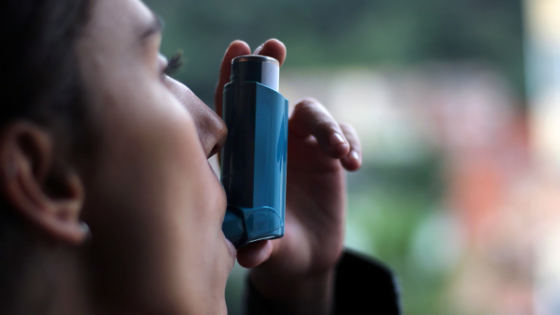The Importance of Fire Safety in the Workplace
Fire safety in the workplace helps you avoid serious emergencies. Here’s why you should be paying more attention to it.
Work-related asthma affects 2 million people in the U.S. Here’s how you can control it.

Work-related asthma is the most common occupational lung disease in the United States, affecting about 2 million people around the country.
Unfortunately, more than 250 substances are known to cause or aggravate work-related asthma, and some professions (construction and mining, for example) are at a much higher risk than others.
You need a healthy workforce in order to thrive, and your employees deserve to work in a hazard-free environment. Here are three essential tips to create an atmosphere where everyone can breathe easier.
One of the best things you can do to control work-related asthma attacks is to identify and avoid allergens that bring on asthma attacks.
Common asthma triggers in the workplace include:
However, keep in mind that asthma doesn’t affect everyone equally. Some people may be far more sensitive than others. In those cases, simply identifying and avoiding allergens isn’t sufficient.
The best way to control (and prevent) work-related asthma is to control your indoor air quality. That way, workers are not exposed to potentially harmful substances and work environments and will have a reduced risk of developing asthma.
Usually, the most effective way to manage indoor air pollution is source control – identifying and eliminating individual sources of air pollution.
Some sources can be sealed, such as those containing asbestos or hazardous chemicals stored in the workplace. Other sources can be adjusted to reduce emissions, as with gas lines.
Another approach is to reduce the overall concentration of indoor air pollutants. You can do this by improving your ventilation system. This is especially important for short activities with a high level of pollutants, such as working with cleaning supplies.
Keep in mind that some areas may require more ventilation than others – enclosed or confined spaces have naturally reduced airflow and thus have specific regulatory requirements to protect workers.
If your workers are regularly exposed to harmful air pollutants in the course of the job, you may need to go one step further to make sure they can breathe safely.
Under OSHA regulations, the primary goal in controlling work-related diseases is to prevent atmospheric contamination. When that is not reasonably possible, employers are obligated to provide respirators.
In any workplace requiring respirators, employers are obligated to create a respiratory safety program with worksite-specific procedures, including instruction on when and how to use respirators.
The employer is responsible for obtaining respirators and ensuring that they are up to regulatory standards. If an employee brings their own respiratory protection gear, the employer must check the equipment to ensure that it meets the appropriate protection standards.
You can’t just use any respirator for any situation. Respirators have to be selected to match the hazards workers are exposed to. You also have to use certified respirators (respirators are certified by the National Institute for Occupational Health and Safety).
We know that health and safety management is no small task. But when it comes to work-related asthma, you can’t afford to give up the fight. At the end of the day, everyone should be able to breathe easier.
Want to find out how we can keep your workforce healthy? Visit the EHS Insight Blog to learn more.
Fire safety in the workplace helps you avoid serious emergencies. Here’s why you should be paying more attention to it.
Excavation safety in the workplace is a crucial step in keeping worksites safe for both employees and the general public. Here’s what you should know.
If your safety program needs a fresh set of eyes, a workplace safety consultant is your best investment. Here’s what they do and why you may need one.
Subscribe to our blog and receive updates on what’s new in the world of EHS, our software and other related topics.